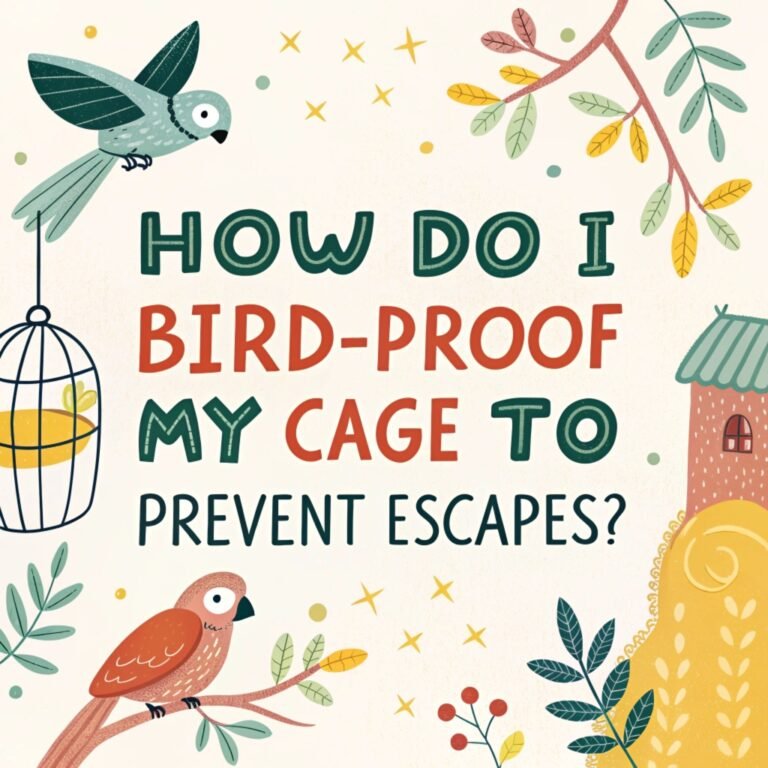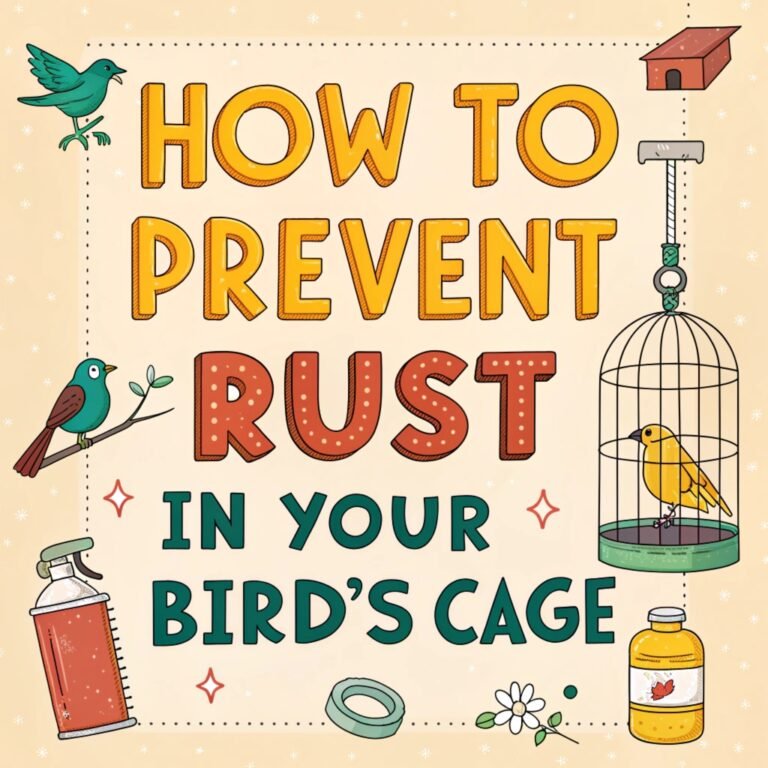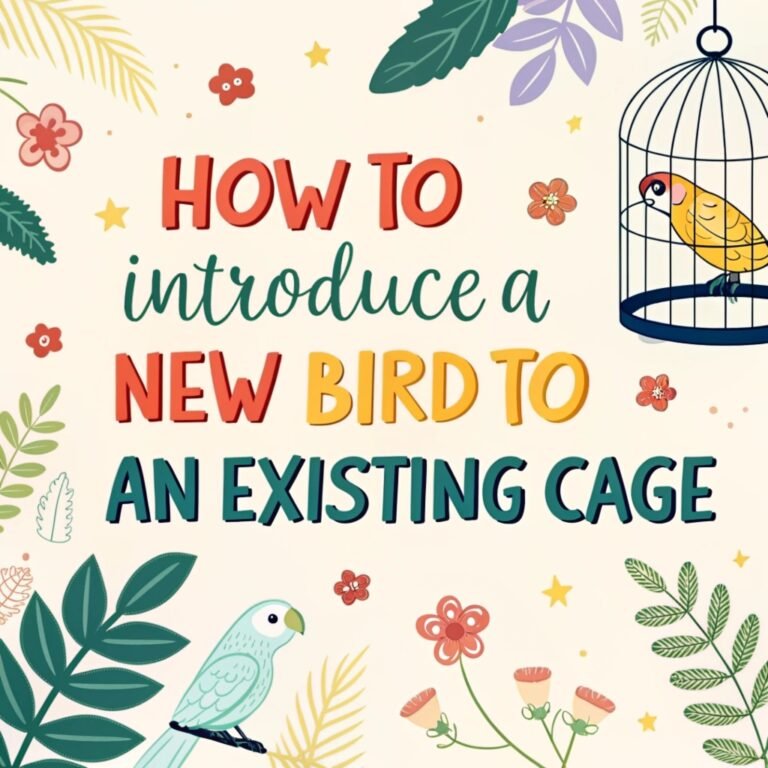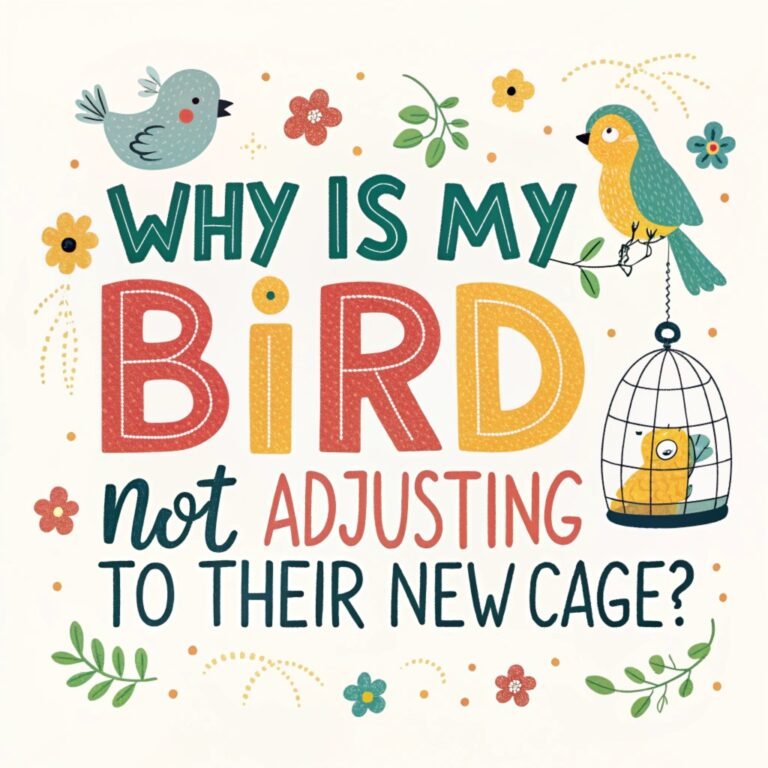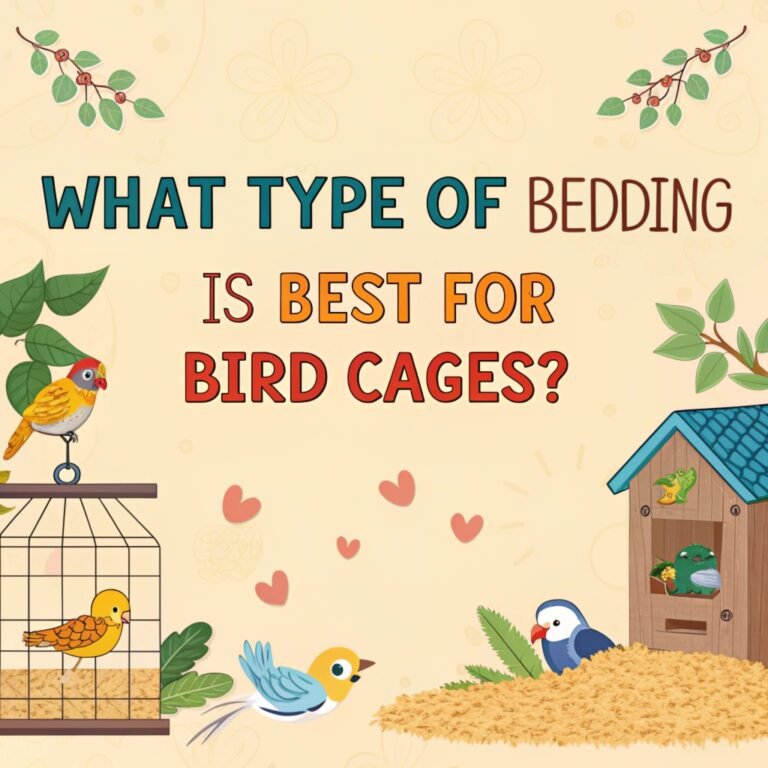What Are The Best Perches For My Bird’s Cage? – Enhancing Your Bird’s Habitat
When it comes to creating a comfortable and stimulating environment for your pet bird, choosing the right perches is crucial.
Perches are not just simple resting spots; they play a vital role in your bird’s physical health, mental stimulation, and overall well-being.
This comprehensive guide will explore the various types of perches available and help you make informed decisions to ensure your feathered friend has the best possible living space.
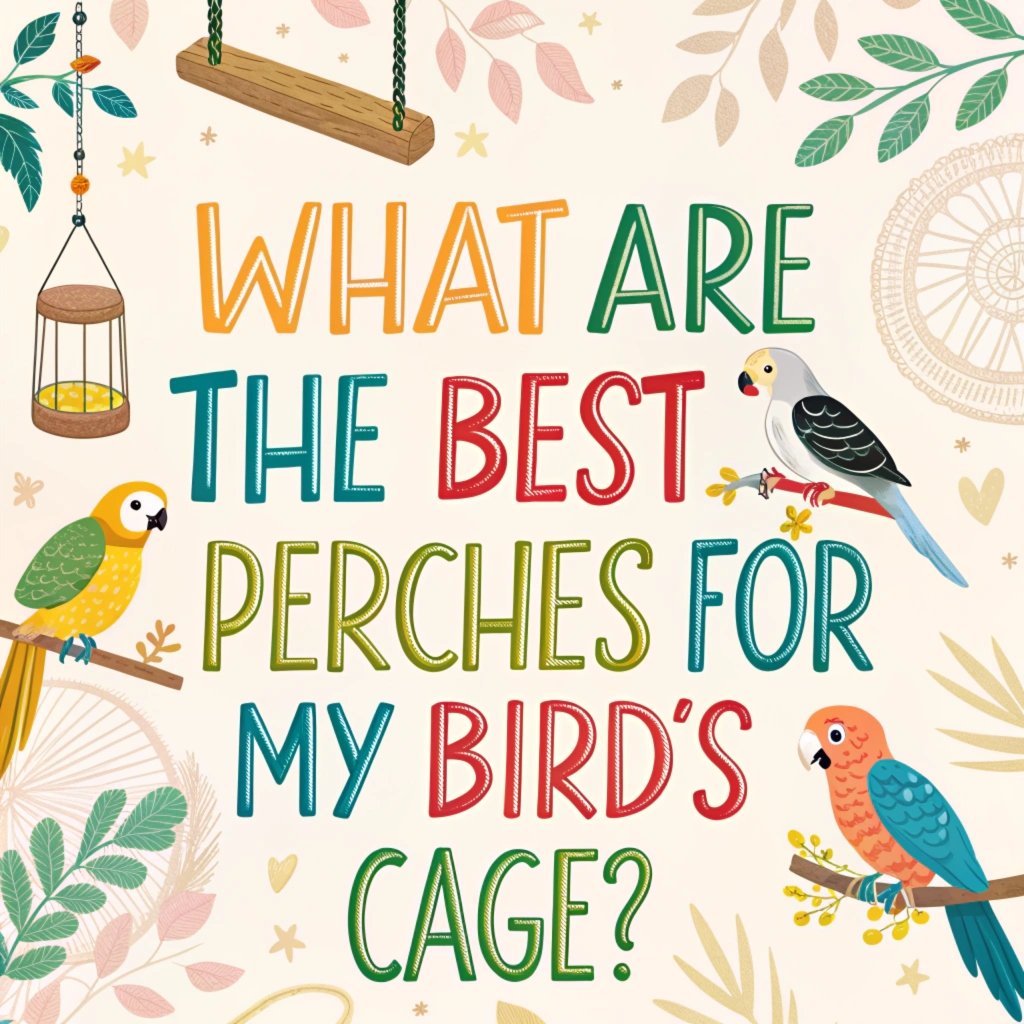
Key Takeaways:
Before diving into the details, let’s highlight some crucial points to keep in mind when selecting perches for your bird’s cage:
- Natural wood perches are highly recommended for their varying textures and diameters, mimicking the bird’s natural habitat
- Variety is key: Offer different types of perches to promote foot health and exercise
- Avoid uniform dowel perches as they can lead to foot problems
- Safety first: Ensure all perches are made from non-toxic materials
- Regular cleaning and inspection of perches is essential for your bird’s health
- Consider your bird’s size when selecting perch diameter
- Positioning matters: Place perches at various heights and locations in the cage
- Chewable perches can provide mental stimulation and beak maintenance
- Therapeutic perches can help with nail trimming and foot health
- Rotate perches periodically to maintain interest and prevent boredom
By keeping these points in mind, you’ll be well-equipped to create a diverse and engaging perch setup for your avian companion.
The Importance of Natural Wood Perches: Mimicking the Wild Environment
Natural wood perches are often considered the gold standard for bird cages. These perches closely resemble the branches birds would encounter in their natural habitats, providing a familiar and comfortable surface for their feet.
The irregular shapes and varying diameters of natural wood perches offer several benefits:
- Foot health: The uneven surfaces help prevent pressure sores and exercise different muscles in the bird’s feet.
- Beak maintenance: Chewing on wood helps keep the beak trimmed and healthy.
- Mental stimulation: The texture and variability of natural wood encourage exploration and foraging behaviors.
- Comfort: Birds can find the most comfortable grip on branches of different sizes.
When selecting natural wood perches, opt for non-toxic varieties such as manzanita, eucalyptus, or fruit tree branches.
Always ensure the wood is properly cleaned and sanitized before introducing it to your bird’s cage.
Remember to regularly inspect these perches for signs of wear or damage, replacing them as needed to maintain a safe environment for your feathered friend.
Rope Perches: A Soft and Flexible Alternative

Rope perches offer a unique texture and flexibility that can benefit your bird in several ways. These perches are typically made from natural fibers like cotton or sisal and come in various diameters and lengths.
The soft surface of rope perches can be particularly soothing for birds with sensitive feet or those recovering from injuries. Here are some advantages of incorporating rope perches into your bird’s cage:
- Comfort: The soft texture provides a gentle surface for perching and gripping.
- Flexibility: Rope perches can be bent into different shapes, adding variety to the cage setup.
- Exercise: The slight give in the rope encourages balance and foot muscle use.
- Versatility: They can be easily moved and adjusted within the cage.
However, it’s important to monitor rope perches closely for fraying or damage. Birds may chew on the fibers, which can lead to ingestion and potential health issues. Replace rope perches promptly if you notice any signs of wear.
Additionally, ensure that the rope perch is securely fastened to prevent accidents. While rope perches can be a valuable addition to your bird’s cage, they should be used in conjunction with other types of perches for a well-rounded environment.
Therapeutic Perches: Promoting Nail and Beak Health
Therapeutic perches, often made from materials like concrete or specially textured surfaces, serve a dual purpose in your bird’s cage. These perches are designed to help maintain your bird’s nail length and promote healthy feet.
While they shouldn’t be the only type of perch in the cage, therapeutic perches can be a valuable addition when used correctly. Here’s what you need to know about these specialized perches:
- Nail maintenance: The rough texture helps file down overgrown nails naturally.
- Foot health: The textured surface can help prevent pressure sores and promote circulation.
- Beak conditioning: Some birds may use these perches to help keep their beaks trimmed.
- Placement: Position therapeutic perches near food dishes or favorite spots to encourage use.
It’s crucial to choose therapeutic perches carefully, as some may contain harmful materials. Opt for perches made from bird-safe materials and avoid those with sharp or abrasive textures that could harm your bird’s feet.
Use therapeutic perches in moderation, as excessive use can lead to foot irritation. Always provide a variety of perch types to ensure your bird has options for comfortable resting and gripping.
Sizing Matters: Choosing the Right Perch Diameter
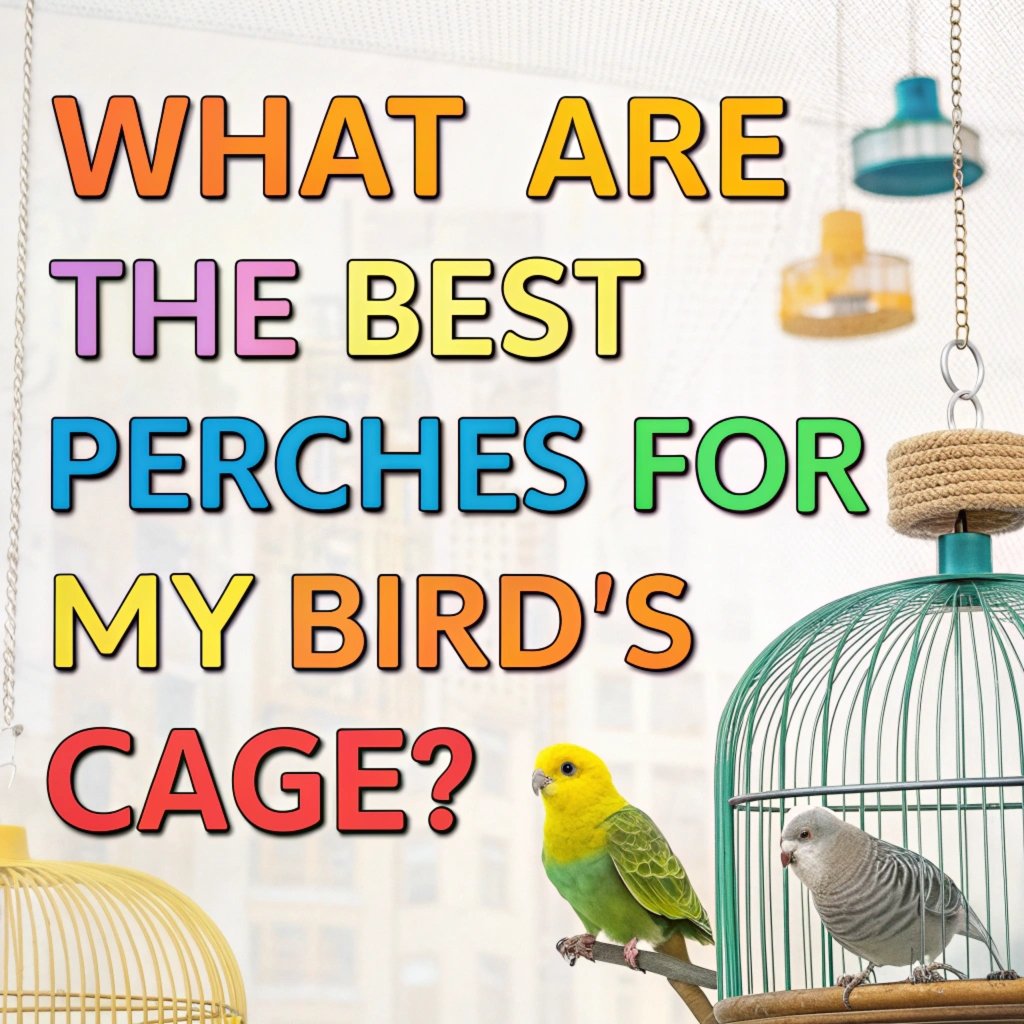
Selecting the appropriate perch diameter is crucial for your bird’s comfort and foot health. The ideal perch size allows your bird to wrap its toes around the perch comfortably, with the toes overlapping slightly.
This natural grip helps distribute weight evenly and promotes proper foot exercise. Here are some guidelines for choosing the right perch diameter:
- Small birds (finches, canaries): 1/4 to 1/2 inch diameter
- Medium birds (cockatiels, conures): 1/2 to 3/4 inch diameter
- Large birds (African greys, amazons): 3/4 to 1 inch diameter
- Very large birds (macaws, cockatoos): 1 to 1 1/2 inch diameter
Remember that these are general guidelines, and individual birds may have preferences. Observe your bird’s behavior and comfort level on different perch sizes.
Providing a variety of diameters within the appropriate range can help exercise different muscles in your bird’s feet and prevent issues like arthritis or atrophy.
When using natural branches, the varying diameters along the length of the branch can offer multiple grip options for your bird.
The Downsides of Dowel Perches: Why Variety is Essential
While dowel perches are commonly included in many bird cages, they are not ideal as the sole perching option for your feathered friend.
Dowel perches have several limitations that can negatively impact your bird’s foot health and overall well-being:
- Uniform diameter: The consistent size doesn’t provide variety for foot positioning.
- Smooth surface: Lacks texture, which can lead to reduced grip strength over time.
- Limited exercise: Doesn’t engage different foot muscles or encourage natural movements.
- Potential for pressure sores: Constant pressure on the same areas of the foot can cause issues.
While it’s not necessary to completely eliminate dowel perches from your bird’s cage, it’s crucial to supplement them with a variety of other perch types.
Natural wood branches, rope perches, and therapeutic perches should make up the majority of your bird’s perching options.
If you do use dowel perches, consider wrapping them with vet wrap or adding texture to provide a more stimulating surface.
Remember, the goal is to create a diverse environment that promotes foot health, exercise, and mental stimulation for your avian companion.
Positioning Perches: Creating a Dynamic Cage Layout
The placement of perches within your bird’s cage is just as important as the types of perches you choose.
A well-designed cage layout can encourage natural behaviors, provide exercise, and ensure your bird feels secure. Consider these factors when positioning perches:
- Varying heights: Place perches at different levels to encourage climbing and flying.
- Horizontal and diagonal orientations: Offer different angles for perching and movement.
- Clear flight paths: Ensure there’s enough space for your bird to fly between perches.
- Proximity to food and water: Place some perches near feeding stations for easy access.
- Safety considerations: Keep perches away from cage bars to prevent tail feather damage.
Experiment with different arrangements to find what works best for your bird. Observe their preferences and adjust accordingly.
Remember to leave open spaces in the cage for toys and other enrichment items. Regularly rotating the position of perches can also help maintain your bird’s interest and provide new challenges.
By creating a dynamic and thoughtful cage layout, you’ll ensure your feathered friend has a stimulating and comfortable living space.
Neem Wood Perches: A Natural and Healthy Option
Neem wood perches are gaining popularity among bird owners, especially in regions where neem trees are native. These perches offer several benefits that make them an excellent choice for your bird’s cage:
- Natural antibacterial properties: Neem wood contains compounds that can help prevent bacterial growth.
- Varied texture: The irregular surface of neem branches provides excellent foot exercise.
- Safe for chewing: Neem wood is non-toxic and can be safely chewed by most birds.
- Durability: Neem wood is resistant to decay and can last longer than some other wood types.
When using neem wood perches, ensure they are properly cleaned and prepared. Remove any loose bark or sharp edges that could harm your bird. As with all natural wood perches, regularly inspect for signs of wear or damage.
Neem wood perches can be an excellent addition to your bird’s cage, providing a natural, healthy, and stimulating perching option. However, remember to offer a variety of perch types to ensure a well-rounded environment for your feathered friend.
Banyan (Peepal) Wood Perches: Sacred and Beneficial
Banyan wood, also known as peepal wood, is not only revered in many cultures but also makes an excellent perch material for birds. These perches offer unique benefits that can enhance your bird’s cage environment:
- Varying thickness: Banyan branches naturally come in different diameters, providing diverse gripping options.
- Durable construction: The wood is strong and long-lasting, making it ideal for bird cages.
- Textured surface: The bark provides a natural, stimulating texture for your bird’s feet.
- Safe for chewing: Banyan wood is non-toxic and can be safely explored by your bird.
When selecting banyan wood perches, choose branches that are free from pesticides and other contaminants. Clean and sanitize the wood thoroughly before introducing it to your bird’s cage.
The unique growth patterns of banyan trees often result in interesting branch shapes, which can add visual appeal to your bird’s habitat while providing an engaging perching experience.
As with all perches, regularly inspect banyan wood for signs of wear and replace as needed to ensure your bird’s safety and comfort.
Mango Wood Perches: A Fruity and Fun Option
Mango wood perches offer a delightful combination of durability and bird-friendly features that make them an excellent choice for your avian companion’s cage. Here’s why mango wood perches are worth considering:
- Sturdy yet chewable: The wood is strong enough to support your bird while being soft enough for safe chewing.
- Natural texture: Mango wood often has a smooth surface with occasional rough patches, providing varied sensations for your bird’s feet.
- Non-toxic material: Mango wood is safe for birds to interact with and chew on.
- Attractive appearance: The wood’s natural grain can add aesthetic appeal to your bird’s cage.
When selecting mango wood perches, ensure they come from untreated sources to avoid any potential chemical exposure.
Clean and sanitize the perches thoroughly before introducing them to your bird’s environment. The varying diameters found in mango branches can offer a range of gripping options, promoting foot health and exercise.
As with all wooden perches, regularly inspect mango wood perches for signs of wear or damage, replacing them as needed to maintain a safe and comfortable perching surface for your feathered friend.
Guava Wood Perches: A Versatile and Bird-Friendly Choice
Guava wood perches are an excellent option for bird owners looking to provide their feathered friends with a natural and stimulating perching surface. These perches offer several advantages that make them suitable for a wide range of bird species:
- Safe and non-toxic: Guava wood is generally safe for birds to chew and interact with.
- Varied diameters: Guava branches often have different thicknesses along their length, providing diverse gripping options.
- Durable construction: The wood is sturdy enough to withstand regular use and chewing.
- Slightly rough texture: The natural surface of guava wood can help with beak and nail maintenance.
When selecting guava wood perches, opt for branches that are free from pesticides and other harmful chemicals. Clean and sanitize the perches thoroughly before introducing them to your bird’s cage.
The natural bends and curves of guava branches can add interest to your bird’s environment while providing comfortable perching spots.
As always, regularly inspect these perches for signs of wear or damage, replacing them as needed to ensure your bird’s safety and comfort.
Guava wood perches can be an excellent addition to your bird’s cage, offering a natural and engaging perching experience.
Eucalyptus Wood Perches: Aromatic and Beneficial
Eucalyptus wood perches offer a unique combination of benefits that can enhance your bird’s cage environment. While not native to all regions, eucalyptus is widely cultivated and can be an excellent choice for bird perches:
- Strong and durable: Eucalyptus wood is known for its strength, making it suitable for various bird sizes.
- Smooth surface: The wood provides a comfortable perching surface for your bird’s feet.
- Natural oils: Eucalyptus contains oils that may have mild respiratory benefits for birds.
- Attractive appearance: The wood’s unique grain patterns can add visual interest to the cage.
When using eucalyptus wood perches, it’s crucial to select well-aged wood. Fresh eucalyptus branches contain high levels of oils that can be toxic to birds if ingested in large quantities.
Allow the wood to dry thoroughly before introducing it to your bird’s cage. Clean and sanitize the perches properly to remove any potential contaminants.
As with all wooden perches, regularly inspect eucalyptus perches for signs of wear or damage, replacing them as needed.
The subtle aroma of eucalyptus can add a pleasant scent to your bird’s environment, but always monitor your bird for any adverse reactions and remove the perch if you notice any issues.
FAQs
How often should I clean my bird’s perches?
You should clean your bird’s perches at least once a week during routine cage cleaning. However, spot cleaning should be done daily to remove droppings and debris. For wooden perches, use a mild soap and water solution, rinse thoroughly, and allow to dry completely before returning to the cage.
Can I use branches from my backyard as perches?
While natural branches can make excellent perches, it’s crucial to ensure they are safe for your bird. Only use branches from non-toxic trees, and avoid those that have been exposed to pesticides or other chemicals. Clean and sanitize the branches thoroughly before introducing them to your bird’s cage.
How many perches should I have in my bird’s cage?
The number of perches depends on the size of your cage and your bird. As a general rule, provide at least 2-3 perches of different types and diameters. Ensure there’s enough space for your bird to move comfortably between perches and that they don’t obstruct food and water access.
Are rope perches safe for all birds?
Rope perches can be safe for most birds when used properly and monitored regularly. However, some birds may chew on the fibers, which can lead to ingestion and potential health issues. Always supervise your bird with rope perches and replace them if you notice any fraying or damage.
How do I know if a perch is the right size for my bird?
A properly sized perch allows your bird to wrap its toes around the perch comfortably, with the toes overlapping slightly. The bird’s feet should not meet completely around the perch, nor should they be stretched too wide. Observe your bird’s comfort level and adjust perch sizes as needed.

Hello, I’m Amelia White, the founder of birdsfanatic.com. As a lifelong bird enthusiast and spiritual seeker, I’ve always been fascinated by the mystical connections between birds and the human experience. On this site, I share my knowledge and insights into the symbolic meanings and spiritual significance of various bird species, exploring their roles in mythology, folklore, and cultural traditions. Join me on this journey into the world of birds, where we’ll discover the hidden wisdom and guidance that these magnificent creatures have to offer.



